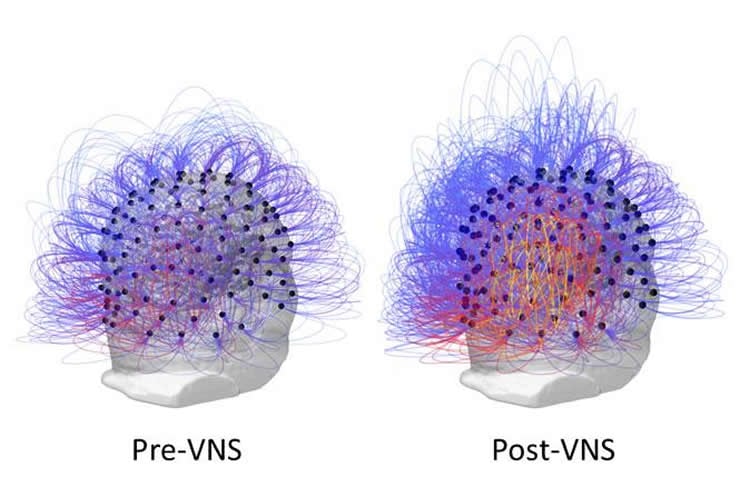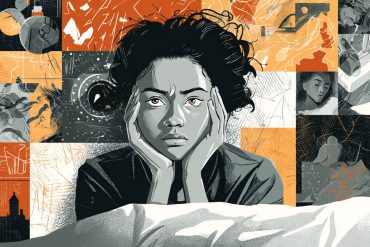Summary: Researchers have been able to restore consciousness to a patient who has been in a vegetative state for 15 years. The groundbreaking study utilized vagus nerve stimulation to help restore consciousness to the patient.
Source: Cell Press.
A 35-year-old man who had been in a vegetative state for 15 years after a car accident has shown signs of consciousness after neurosurgeons implanted a vagus nerve stimulator into his chest. The findings reported in Current Biology on September 25 show that vagus nerve stimulation (VNS)–a treatment already in use for epilepsy and depression–can help to restore consciousness even after many years in a vegetative state.
The outcome challenges the general belief that disorders of consciousness that persist for longer than 12 months are irreversible, the researchers say.
By stimulating the vagus nerve, we show that “it is possible to improve a patient’s presence in the world,” says Angela Sirigu of Institut des Sciences Cognitives Marc Jeannerod in Lyon, France.

The vagus nerve connects the brain to many other parts of the body, including the gut. It’s known to be important in waking, alertness, and many other essential functions. To test the ability of VNS to restore consciousness, the researchers, led by Sirigu and clinicians lead by Jacques Luauté, wanted to select a difficult case to ensure that any improvements couldn’t be explained by chance. They looked to a patient who had been lying in a vegetative state for more than a decade with no sign of improvement.
After one month of vagal nerve stimulation, the patient’s attention, movements and brain activity significantly improved, they report. The man began responding to simple orders that had been impossible before. For example, he could follow an object with his eyes and turn his head upon request. His mother reported an improved ability to stay awake when listening to his therapist reading a book.
After stimulation, the researchers also observed responses to “threat” that had been absent. For instance, when the examiner’s head suddenly approached the patient’s face, he reacted with surprise by opening his eyes wide. After many years in a vegetative state, he had entered a state of minimal consciousness.

Recordings of brain activity also revealed major changes. A theta EEG signal important for distinguishing between a vegetative and minimally conscious state increased significantly in areas of the brain involved in movement, sensation, and awareness. VNS also increased the brain’s functional connectivity. A PET scan showed increases in metabolic activity in both cortical and subcortical regions of the brain, too.
The findings show that the right intervention can yield changes in consciousness even in the most severe clinical cases, the researchers say.
“Brain plasticity and brain repair are still possible even when hope seems to have vanished,” Sirigu says.
The researchers are now planning a large collaborative study to confirm and extend the therapeutic potential of VNS for patients in a vegetative or minimally conscious state. In addition to helping patients, Sirigu says the findings will also advance understanding of “this fascinating capacity of our mind to produce conscious experience.”
Funding: The study was supported by CNRS, ANR, and by a grant from the University of Lyon within the program “Investissement d’Avenir.”
Source: Joseph Caputo – Cell Press
Image Source: NeuroscienceNews.com images are credited to Corazzol et al.
Original Research: Full open access research for “Restoring consciousness with vagus nerve stimulation” by Martina Corazzol, Guillaume Lio, Arthur Lefevre, Gianluca Deiana, Laurence Tell, Nathalie André-Obadia, Pierre Bourdillon, Marc Guenot, Michel Desmurget, Jacques Luauté, and Angela Sirigu in Current Biology. Published online September 25 2017 doi:10.1016/j.cub.2017.07.060
[cbtabs][cbtab title=”MLA”]Cell Press “After 15 Years in a Vegetative State, Nerve Stimulation Restores Consciousness.” NeuroscienceNews. NeuroscienceNews, 25 September 2017.
<https://neurosciencenews.com/vegetative-state-consciousness-nerve-stimulation-7575/>.[/cbtab][cbtab title=”APA”]Cell Press (2017, September 25). After 15 Years in a Vegetative State, Nerve Stimulation Restores Consciousness. NeuroscienceNews. Retrieved September 25, 2017 from https://neurosciencenews.com/vegetative-state-consciousness-nerve-stimulation-7575/[/cbtab][cbtab title=”Chicago”]Cell Press “After 15 Years in a Vegetative State, Nerve Stimulation Restores Consciousness.” https://neurosciencenews.com/vegetative-state-consciousness-nerve-stimulation-7575/ (accessed September 25, 2017).[/cbtab][/cbtabs]
Abstract
Restoring consciousness with vagus nerve stimulation
Patients lying in a vegetative state present severe impairments of consciousness caused by lesions in the cortex, the brainstem, the thalamus and the white matter. There is agreement that this condition may involve disconnections in long-range cortico–cortical and thalamo-cortical pathways. Hence, in the vegetative state cortical activity is ‘deafferented’ from subcortical modulation and/or principally disrupted between fronto-parietal regions. Some patients in a vegetative state recover while others persistently remain in such a state. The neural signature of spontaneous recovery is linked to increased thalamo-cortical activity and improved fronto-parietal functional connectivity. The likelihood of consciousness recovery depends on the extent of brain damage and patients’ etiology, but after one year of unresponsive behavior, chances become low. There is thus a need to explore novel ways of repairing lost consciousness. Here we report beneficial effects of vagus nerve stimulation on consciousness level of a single patient in a vegetative state, including improved behavioral responsiveness and enhanced brain connectivity patterns.
“Restoring consciousness with vagus nerve stimulation” by Martina Corazzol, Guillaume Lio, Arthur Lefevre, Gianluca Deiana, Laurence Tell, Nathalie André-Obadia, Pierre Bourdillon, Marc Guenot, Michel Desmurget, Jacques Luauté, and Angela Sirigu in Current Biology. Published online September 25 2017 doi:10.1016/j.cub.2017.07.060







